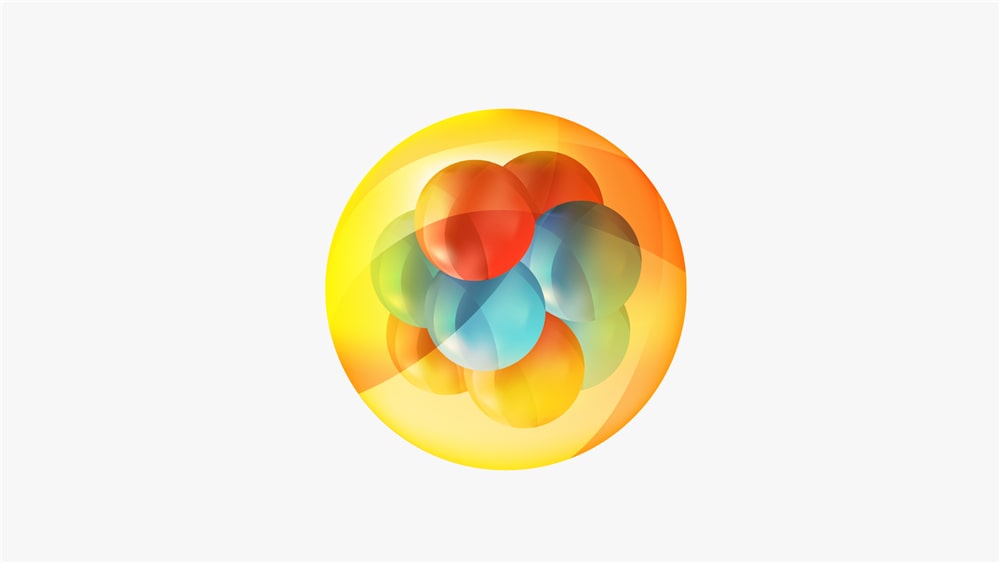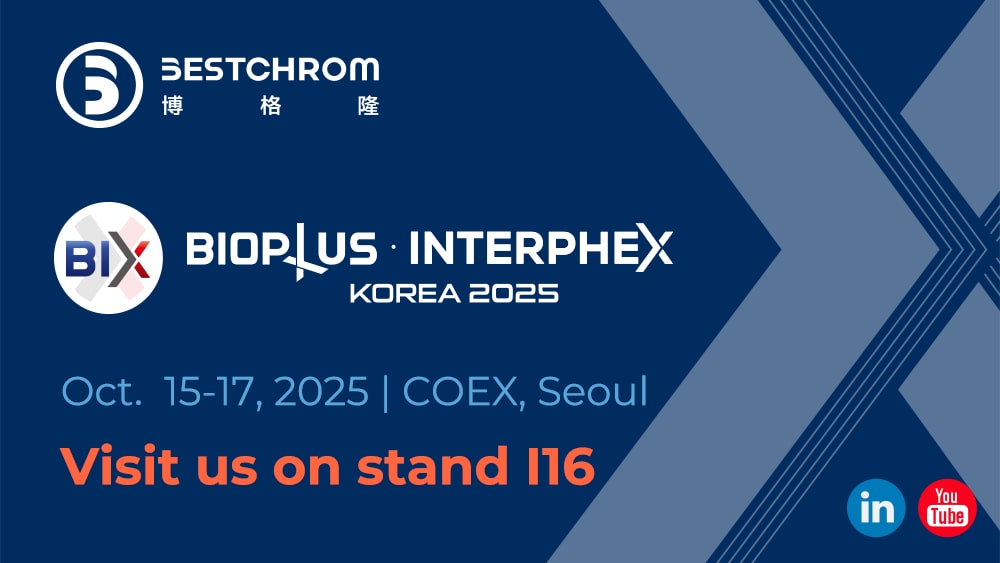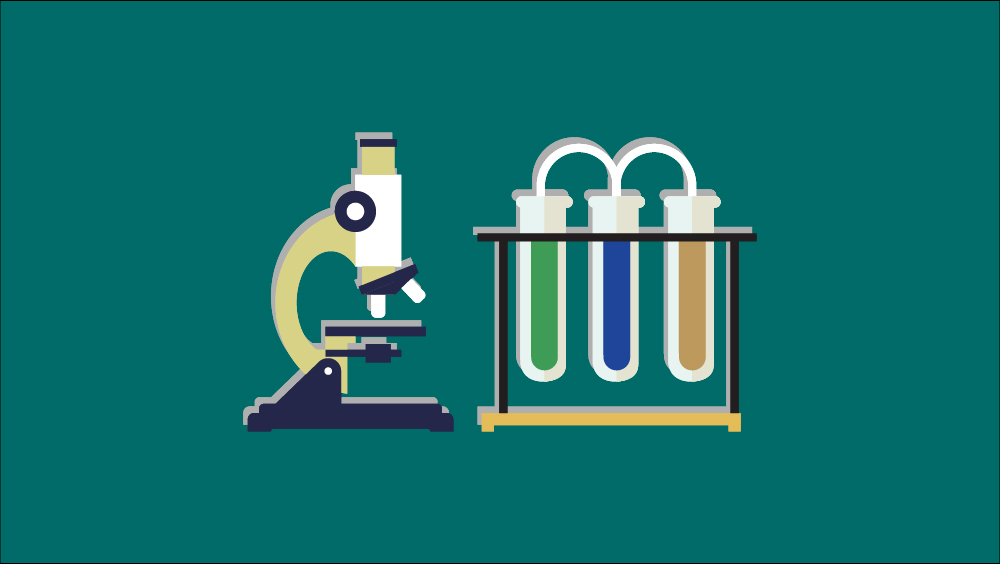Everything You Need to Know About Protein A Affinity Resins
What exactly are Protein A affinity resins, and why are they such a big deal in Biopharmaceutical manufacturing?
If you’ve ever taken an interest in how therapeutic antibodies are made, you’ll quickly find that one name keeps popping up: Protein A. Behind the scenes of every life-saving monoclonal antibody drug lies a purification process, and at the heart of that process are Protein A affinity resins.
Protein A affinity resins are specialized chromatography materials used to selectively capture and purify immunoglobulin G (IgG) antibodies from complex biological mixtures. Their ability to isolate target antibodies with high precision and yield makes them indispensable in antibody production, particularly at industrial scales.
According to a 2024 industry report, the global market for Protein A resins was valued at $1.1 billion USD, and it's projected to grow at a compound annual growth rate (CAGR) of over 9% through 2030. That growth is driven by the increasing demand for antibody-based therapeutics worldwide.
In this article, we’re going to unpack Protein A affinity resins from the ground up: how they work, what makes them unique, where they’re used, and how to choose the right one for your research or manufacturing process.
1. The Basics of Protein A
Before we dive deeper into Protein A affinity resins, let’s first understand the star of the show—Protein A itself.
Protein A is a bacterial surface protein originally isolated from Staphylococcus aureus. What makes it truly special is its unique ability to bind specifically to the Fc region of antibodies.
Now, why does that matter? The Fc region is the “tail” part of an antibody molecule—when Protein A binds to it, it allows for precise capture of antibodies from a mixture that might contain thousands of other proteins. Think of it like finding a needle in a haystack, but with a magnet tuned exactly to IgG.
But not all antibodies are created equal, and not all of them bind Protein A with the same strength. Here’s a quick reference table showing the binding affinities of Protein A to different species and antibody subclasses:
|
Species |
Subclass |
Binding |
|---|
|
Human |
IgG1 |
+++ |
|
IgG2 |
+++ |
|
IgG3 |
- |
|
IgG4 |
+++ |
|
IgA |
Variable |
|
IgD |
- |
|
IgE |
- |
|
IgM |
Variable |
|
Mouse |
IgG1 |
+ |
|
IgG2a |
++++ |
|
IgG2b |
++++ |
|
IgG3 |
+ |
|
IgM |
Variable |
|
Rat |
IgG1 |
- |
|
IgG2a |
- |
|
IgG2b |
- |
|
IgG2c |
N/A |
|
IgG3 |
+ |
|
Pig |
Total IgG |
+++ |
|
Dog |
Total IgG |
+ |
|
COW |
Total IgG |
+ |
|
Goat |
Total IgG |
- |
|
Sheep |
IgY |
+/- |
|
Chicken |
All species |
N/A |
|
rabbit |
Total IgG |
+++ |
|
Avian egg yolk |
IgY |
- |
|
Guinea pig |
IgG₁ |
+++ |
|
Hamster |
Total IgG |
+ |
|
Horse |
Total IgG |
+ |
|
Koala |
Total IgG |
- |
|
Llama |
Total IgG |
- |
|
Monkey (rhesus,) |
Total IgG |
+++ |
+++=strong binding
+=weak binding
- = no binding
+/- = weak binding in some cases
nd = no data available
This binding selectivity is precisely why Protein A is a go-to tool for monoclonal antibody purification. In fact, over 80% of commercial antibody drugs today are initially purified using Protein A-based chromatography steps.
So next time you hear someone mention Protein A in a lab or biotech context, you’ll know: it’s not just a bacterial protein—it’s a biochemical gatekeeper for the multi-billion-dollar antibody therapeutics industry.
2. What is a Protein A Affinity Resin?
Now that you know what Protein A is, let’s talk about how it becomes a usable tool in the lab—through Protein A affinity resins.
A Protein A affinity resin is a specially engineered material used in chromatography columns to purify antibodies—especially immunoglobulin G (IgG)—based on their specific interaction with Protein A.
Here’s the basic idea: imagine millions of Protein A molecules firmly attached to tiny porous beads. These beads are packed into a column. When your mixture containing antibodies flows through, only the IgG antibodies stick to the Protein A. Everything else? It gets washed away. Simple, but powerful.
What are Protein A resins made of?
Most Protein A resins have two key components:
-
Solid support matrix: Usually made of cross-linked agarose, synthetic polymers, or other porous materials that are inert but provide high surface area.
-
Immobilized Protein A ligand: The actual Protein A is covalently bonded to the matrix so it won’t leach out during purification.
Some resins also include a flexible “spacer arm” between the matrix and Protein A to reduce steric hindrance and improve binding efficiency.
How does Protein A affinity resin work?
The process is based on a technique called affinity chromatography. Here’s a step-by-step breakdown:
-
Equilibration: The column is prepared with a binding buffer (usually neutral pH).
-
Sample loading: The antibody-containing mixture is passed through the resin-packed column.
-
Binding: IgG antibodies bind selectively to the Protein A on the resin.
-
Washing: Impurities and unbound proteins are washed away.
-
Elution: A low-pH buffer (typically pH 3.0–3.5) is used to release the purified antibodies.
And it’s incredibly efficient. High-performance Protein A resins today can bind up to 80 mg of IgG per milliliter of resin. That means just one liter of resin can purify 80 grams of antibody—enough for hundreds or even thousands of therapeutic doses, depending on the application.
Why is the resin format so important?
By immobilizing Protein A onto a solid support, we avoid issues like free-floating Protein A contaminating the product. This setup also allows resins to be reused for multiple purification cycles—some up to 100 cycles or more—as long as proper cleaning and regeneration protocols are followed.
So in summary, Protein A affinity resin is more than just a scientific tool—it’s a cornerstone of modern antibody production
3. Protein A Affinity Resins Advantages and Limitations
By now you’re probably impressed by how powerful Protein A affinity resins can be. But like any tool in biotechnology, they come with both strengths and trade-offs.
Let’s take a clear-eyed look at what makes Protein A resins so valuable—and what you need to watch out for when using them.
Key Advantages of Protein A Affinity Resins
-
High Selectivity: Protein A binds specifically to the Fc region of IgG, giving you unmatched purification purity—typically over 95% in a single step.
-
Fast Processing: A full purification run can be completed in just 2–4hours, making it ideal for time-sensitive workflows.
-
Scalable: The same resin can be used in small lab columns or 2,000+ liter industrial chromatography systems. Scale-up is straightforward.
-
High Binding Capacity: Advanced commercial resins can bind up to 80 mg of IgG per mL of resin, making them incredibly efficient.
-
Automation Friendly: Compatible with FPLC systems like ÄKTA™, Unicorn™, and others for high-throughput or GMP-compliant workflows.
But... It's Not Perfect: Limitations You Should Know
-
Subclass Limitations: Protein A does not bind all antibody subclasses equally well. For example, human IgG3 and IgM generally show poor binding.
-
pH Sensitivity: Elution at low pH (e.g., pH 3.0) can damage sensitive antibodies if not neutralized quickly.
-
Protein A Leaching: During elution, some Protein A molecules may leach off the resin and contaminate your antibody. Regulatory standards limit IgG levels for therapeutic use to less than 10 ng/mg.
-
Alkaline Instability: During CIP (high-concentration NaOH,eg≥0.5 M NaOH) causes covalent ligand cleavag,ultimately compromising resin lifetime through irreversible binding capacity los
-
Cost: High-quality Protein A resins can cost anywhere from $10 to $30 USD per mL. For large-scale applications, this can be a major budget item.
Can Protein A Resins Be Reused?
Yes—but with caveats.
Many manufacturers advertise reusability of~100cycles when proper cleaning in place (CIP) and storage conditions are followed. Alkali-stable resins extend this number even further by tolerating harsh cleaning agents like 0.1-0.5 M NaOH. But every reuse cycle slightly reduces binding capacity .
4. Applications and Use Cases
Protein A affinity resins are a cornerstone in bioprocessing, particularly for purifying monoclonal antibodies (mAbs) and other Fc-containing proteins. Their real-world applications shine in the following areas:
Monoclonal Antibody Purification: Protein A resins are the gold standard in biopharma for capturing mAbs from complex mixtures like cell culture supernatants. They bind specifically to the Fc region of antibodies, enabling high-purity yields (>95%) in a single step, which is critical for producing therapeuticsantibody.
Biopharmaceutical Manufacturing: Used extensively in large-scale production of mAb-based drugs (e.g., for cancer, autoimmune diseases). Their high specificity reduces downstream processing steps, saving time and cost in facilities producing drugs under GMP standards.
Research and Development: In academic and industrial labs, Protein A resins are used for small-scale antibody purification for studies on protein function, drug discovery, or diagnostic development. They’re valued for their ability to isolate antibodies from diverse sources like hybridoma cultures or serum.
Diagnostics and Reagent Production: Protein A resins purify antibodies used in diagnostic kits (e.g., ELISA, immunohistochemistry) or as reagents in analytical assays, ensuring high specificity and low contamination.
5. How to Use Protein A Resins in the Lab
Whether you're a research assistant, a graduate student, or working in a GMP bioprocessing lab, knowing how to properly use Protein A affinity resins is a must-have skill.
Good news: the basic workflow is surprisingly straightforward. Let’s walk through the standard protocol step by step—and sprinkle in a few pro tips along the way.
Step-by-Step: Protein A Chromatography Workflow
-
Equilibration:
Wash the resin with 5–10 column volumes of binding buffer (usually phosphate-buffered saline, pH 7.0–7.4) to prepare the column for sample loading.
-
Sample Loading:
Apply your antibody-containing sample to the column. This could be cell culture supernatant, ascites fluid, or serum. Let gravity flow or pump at a low-to-moderate flow rate (typically 100–240 cm/h).
-
Binding:
IgG antibodies will bind to Protein A on the resin. Non-IgG proteins flow through the column and can be discarded or collected separately.
-
Washing:
Wash with 5–10 column volumes of binding buffer to remove residual non-specific proteins. You should see the UV absorbance return to baseline.
-
Elution:
Elute the bound IgG by applying a low-pH elution buffer (commonly glycine-HCl, pH 3.0–3.5). Collect the eluate in tubes pre-filled with neutralization buffer (e.g., 1 M Tris, pH 8.0).
-
Regeneration (optional for reuse):
Clean the resin with 0.1 M NaOH for 15–30 minutes, then wash the resin with equilibration buffer for 5–10 column volumes until neutral pH is achieved.
-
Storage:
Resin should be stored in 20% ethanol at 2–8°C.
Tips for Optimal Results
-
pH matters: Make sure your sample is close to neutral pH before loading, or you risk losing binding efficiency.
-
Flow rate control: Slower flow allows better antibody–resin interaction.
-
Neutralize fast: Always add neutralization buffer immediately after elution—IgG proteins are sensitive to low pH and can denature quickly.
How much antibody can Protein A resin bind?
This depends on the specific resin you’re using, but here are general guidelines:
Common Mistakes to Avoid
-
Skipping filtration: Always pre-filter your sample to remove particulates.
-
Forgetting to neutralize: Low pH can destroy your hard-earned antibodies.
-
Overloading the resin: More sample ≠ more yield. Exceeding resin capacity just leads to waste.
Protein A chromatography may seem “plug and play,” but attention to detail makes all the difference. Once you’ve mastered the technique, you’ll be able to purify milligrams—or even grams—of antibody with high purity in a single afternoon.
6. Choosing the Right Protein A Resin
With so many Protein A resins on the market, how do you choose the one that fits your project best?
Start by asking the right questions. The resin you use in a university lab might not be the best choice for GMP-grade manufacturing—and vice versa.
Key Factors to Consider When Choosing a Protein A Resin
-
Antibody Species and Subclass: Some Protein A resins bind poorly to IgG3, IgM, or certain rodent antibodies. Always confirm compatibility.
-
Binding Capacity: choose a resin with appropriate binding capacity(e.g.,40-80mg/ml ).
-
Chemical Stability: Will you be cleaning with NaOH? choose a resin with better alkaline stability
-
Column Pressure: If you're using fast flow rates, make sure the resin supports high mechanical strength.
-
Reusability: For cost control in production, opt for resins rated for 100+ cycles.
-
Regulatory Requirements: For clinical manufacturing, choose resins with FDA Drug Master Files (DMFs), Regulatory Support Files(RSF),and Certificate of Analysis(COA) etc., as support documentation.
No resin is “one-size-fits-all.” The best choice depends on your budget, scale, process, and antibody type.
7. Storage, Regeneration, and Maintenance
Want to extend the life of your Protein A resin and maintain peak performance over dozens of cycles? Proper storage and cleaning are key.
Storage Guidelines
-
Store unused or used resin in a solution of 20% ethanol at 2–8°C to prevent microbial contamination.
-
Keep the resin sealed and avoid prolonged exposure to air.
-
Never freeze the resin—it can damage the matrix.
Cleaning and Regeneration (CIP)
Cleaning-in-place (CIP) protocols are essential for reuse. Here's a basic guideline:
-
Use 0.1–0.5 M NaOH as a cleaning solution if the resin is alkali-tolerant (check the datasheet).
-
Circulate NaOH through the column for 15–30 minutes after each use.
-
Rinse with several volumes of deionized water or buffer until neutral pH is achieved.
Monitoring Resin Health
Resins don't last forever. Watch for these signs of degradation:
-
Increased back pressure during operation
-
Decreased binding capacity (e.g., 10-20% drop from original)
-
Protein A leaching into eluates
Keeping a detailed log of usage cycles, cleaning conditions, and performance data can help extend resin lifetime and maintain consistency in production.
8. Troubleshooting Common Problems
Even experienced users run into issues when working with Protein A affinity resins. But don't worry—we've got a cheat sheet of the most common problems and how to fix them.
Problem 1: Low Antibody Yield
Possible Causes:
-
Sample pH is not optimal (ideally 7.0–8.0)
-
Sample overloaded the resin's binding capacity
-
Incorrect antibody isotype or subclass that doesn't bind well to Protein A
-
Protein A ligand degraded due to harsh cleaning or aging
Solutions: Adjust pH, dilute sample, verify antibody compatibility, or switch to a resin with higher affinity.
Problem 2: Resin Clogs or Flow Is Too Slow
Possible Causes:
-
Unfiltered sample containing cell debris or aggregates
-
Microbial growth in stored resin
-
Resin compressed or packed too tightly
Solutions: Always pre-filter samples (0.22–0.45 μm), clean resin regularly, and repack gently if needed.
Problem 3: Excessive Protein A Leaching Detected
Possible Causes:
-
Old or damaged resin surface
-
Strong acidic or strong alkaline elution buffers used too frequently
Solutions: Use alkali-tolerant or low-leach commercial resins, and monitor with Protein A ELISA kits.
Problem 4: Decreasing Binding Over Time
Likely Cause: Resin is nearing the end of its usable life.
Solution: If binding drops by >20%, replace the resin or regenerate with NaOH and reassess performance.
Remember: Good documentation and preventive maintenance can save you time, money, and sample loss!
9. Frequently Asked Questions (FAQs)
Still have questions? Here are some of the most common queries we get about Protein A affinity resins.
Q1: Can Protein A be used for IgM or IgA purification?
A: Not effectively. Protein A has little to no binding for IgM or IgA. Use Protein L resins instead.
Q2: Can I reuse Protein A resin?
A: Yes—high-quality Protein A resins can be reused for 100 cycles, depending on cleaning and handling. Always monitor for leaching or binding loss.
Q3: What pH should I use for elution?
A: Elution typically occurs between pH 3.0 and 3.5. Immediately neutralize the eluate with Tris buffer to avoid antibody denaturation.
Q4: Can I store resin dry?
A: No. Always store resin in 20% ethanol at 2–8°C. Never let it dry out—it may become unusable.
Q5: Is there a cheaper alternative to Protein A resin?
A: For research use, Ion exchange resins may be more cost-effective, but their capture efficiency is lower than that of Protein A. However, for GMP antibody production, Protein A remains the gold standard.
Q6: Do Protein A resins have an expiration date?
A: Yes. Shelf life is usually 5 years if unopened and stored properly. Always check the certificate of analysis.
10. Conclusion
Protein A affinity resins have transformed how we purify antibodies—from academic research to commercial biopharmaceuticals. They’re fast, selective, scalable, and surprisingly easy to use once you understand the basics.
Whether you’re purifying 1 mL of hybridoma supernatant or manufacturing 10,000 doses of a therapeutic mAb, Protein A is the trusted tool that delivers.
If you're new to antibody purification or looking to scale up, investing in the right Protein A affinity resin is one of the smartest decisions you can make.
Still have questions or need help choosing a chromatography resin for your specific workflow? Contact us or drop a comment—we’d love to help!









.png)


